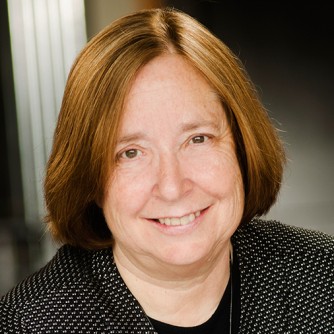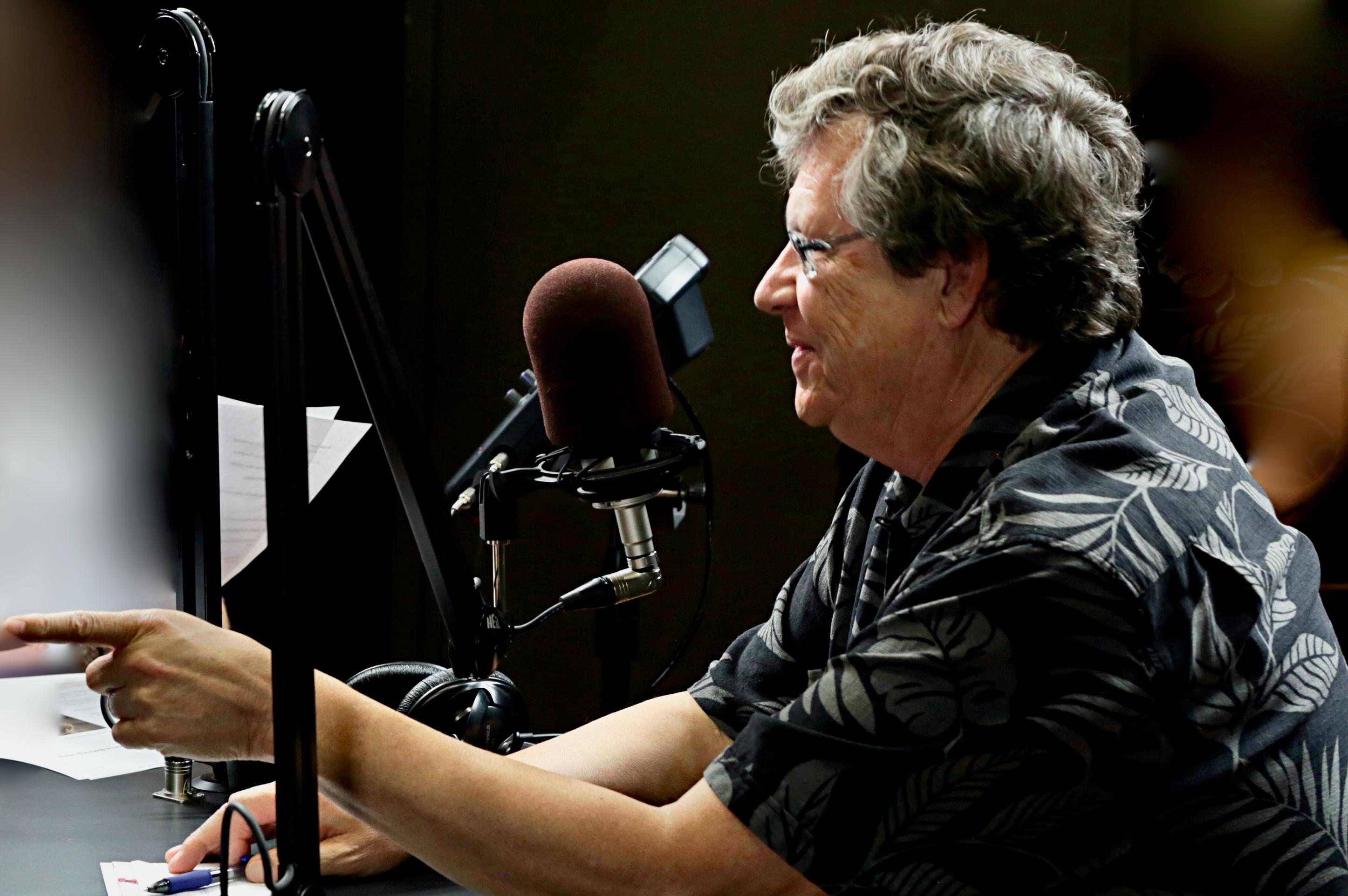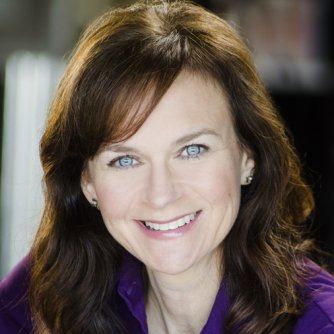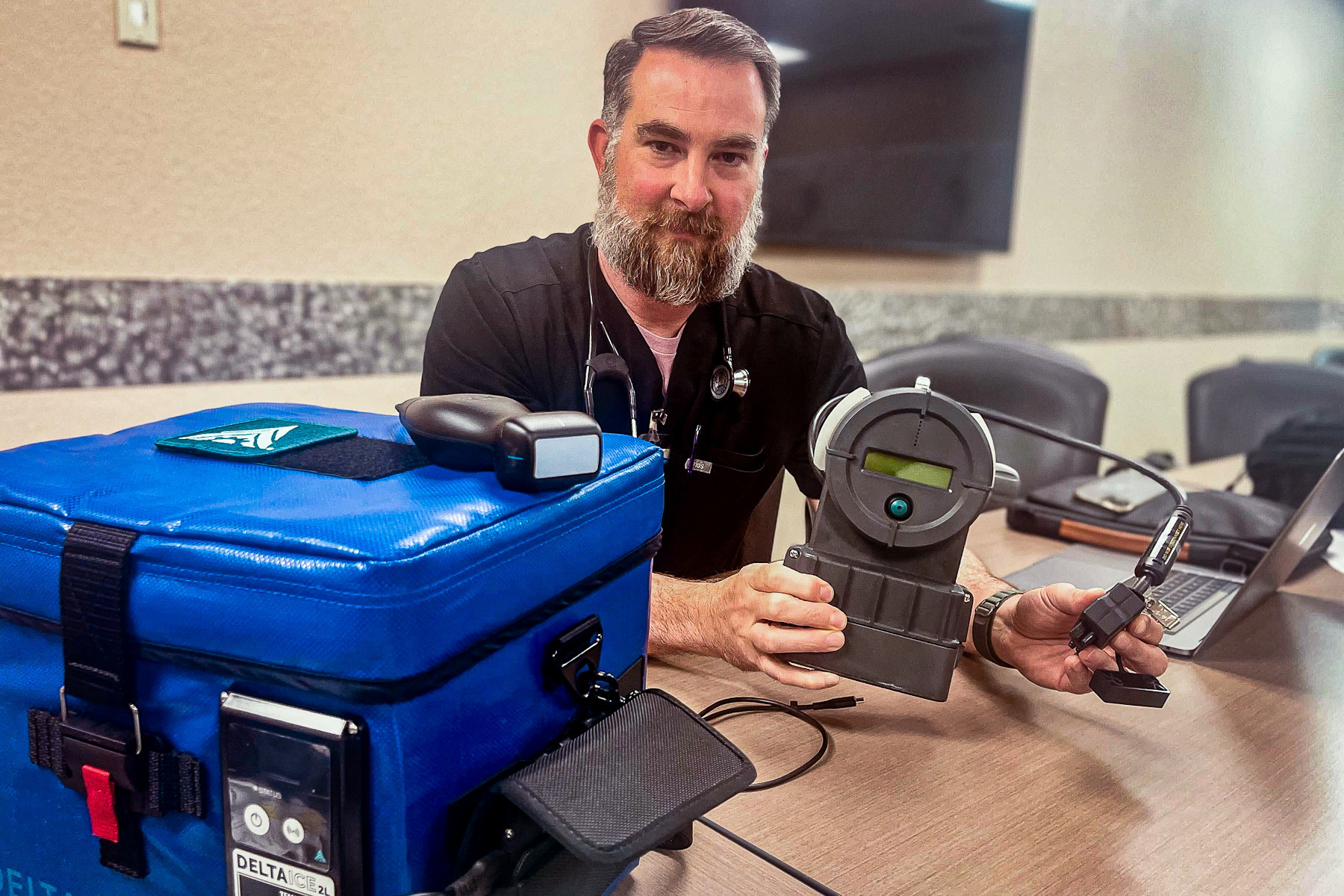
Specially trained medics will hit the streets in Colorado Springs today with a new lifesaving tool – blood.
The city will become the first urban area in Colorado to provide transfusions of whole blood to critically ill patients in the field. A similar program is scheduled to launch in Clear Creek County, west of Denver, soon.
“The statistics are startling,” said Dr. Matthew Angelidis, co-chief medical director for the Colorado Springs Fire Department and an emergency room physician. “The number one most common reason for you to die in this country under the age of 46 is hemorrhagic shock, or bleeding to death.”
Cities in other states where the system is already in place “save 30 to 40% more patients than we do in our own city,” he said.
Angelidis, a former combat physician, said transfusions were almost exclusively confined to hospitals until war-time experience demonstrated how effective they could be in the field.
“My experience deployed in the Middle East involved the use of whole blood to resuscitate soldiers and then injured civilians in combat theaters,” he said. “We saw fantastic results, and it always seemed obvious to me that we should be using those practices that worked in the military for those of us in the civilian world here in Colorado Springs.”
The program is starting with two vehicles staffed by fire department medics and equipped with special devices to keep the blood cool in transport and to warm it before transfusion. They’ll be dispatched automatically to some types of accidents and first-responders can also call them to emergency scenes.
Fire Department Lt. Aaron McConnellogue is on the team that will administer blood on scene.
“The six of us that are going to be doing this, we have a little bit of anxiety until we do this the first couple of times, but we're also extremely excited knowing that it's an opportunity to potentially change somebody's life,’’ he said.
Colorado Matters senior host Ryan Warner spoke with both men at the fire department’s medical division headquarters in Colorado Springs while McConnellogue displayed a cooler and a blood warmer.
Lieutenant Aaron McConnellogue: With the cooler, we have to keep the blood at a certain temperature to make sure that we're preserving the blood. Once we actually bring the blood out, run everything through the heater, in about six seconds, it's going to have the blood to our temperature.
Warner: Because you have got to use body temperature blood. That makes a lot of sense to me as opposed to infusing people with cold blood.
McConnellogue: Yeah, they're already either a trauma patient or a medical patient. They're already going to be cold.
Warner: Does any of this make you nervous? This is an extra job in the field? Or does it spell pure opportunity for you?
McConnellogue: Nervous, opportunity, and excited. The six of us that are going to be doing this, we have a little bit of anxiety until we do this the first couple of times, but we're also extremely excited knowing that it's an opportunity to potentially change somebody's life.
Warner: Or save it.
McConnellogue: Or save it.
Warner: It does occur to me that your job – how long have you been in this field?
McConnellogue: 31 years.
Warner: I have to think that over the 31 years you've done this, what is asked of you has probably changed so much.
McConnellogue: Drastically, yeah. Just constantly evolving with technology and ultrasound units where we're actually carrying portable ultrasound units that plug into our iPhones now and we're going to be ultrasounding these patients for certain cases.
Warner: Is the ultrasound to detect internal bleeding?
McConnellogue: It can be used for that. How we're going to start using it though right now is to detect movement within the heart. If a patient has expired and we're not feeling pulses, we've got no blood pressure, we've got them hooked up to a cardiac monitor and not seeing anything, this is another tool that we'll actually be able to use to see if there's movement within the heart to know that if this is a viable candidate for us to deliver blood.
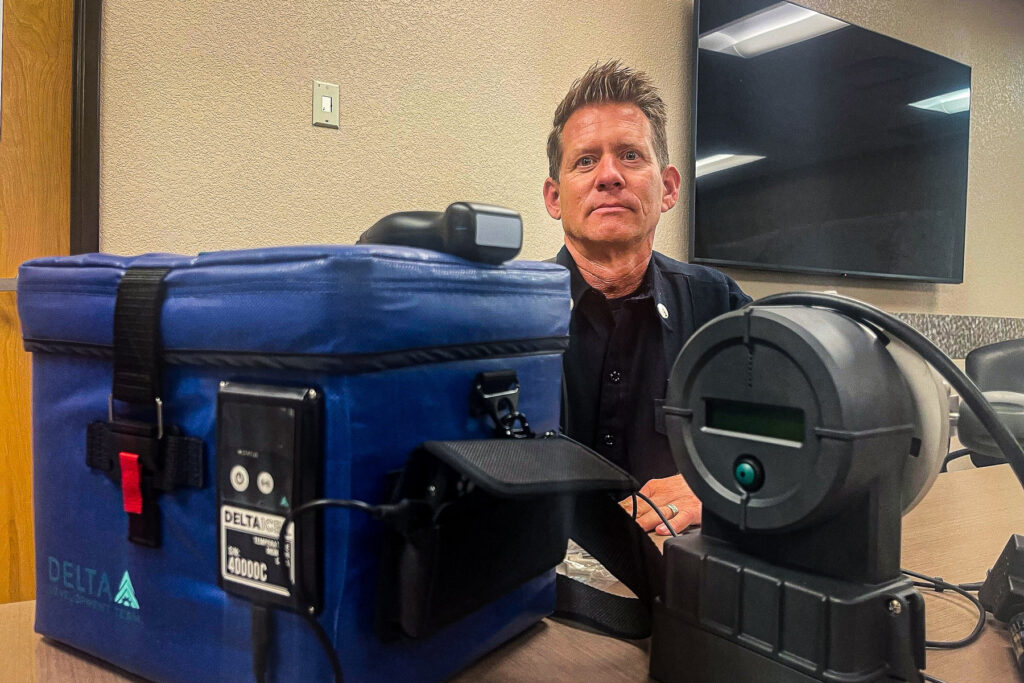
Warner: Lieutenant Aaron McConnellogue of the Colorado Springs Fire Department. He's on the team that will get whole blood to people before they're at the hospital. This idea stems from war zones, says emergency physician and veteran Matt Angelidis.
Matt Angelidis: We have been experimenting with whole blood in combat, on the field in particular, really since World War One. It fell out of favor in the '70s and then made a resurgence for the operations in Iraq and Afghanistan over the last two decades or so. And so my experience deployed in the Middle East involved the use of whole blood to resuscitate soldiers and then injured civilians in combat theaters. And we saw fantastic results, and it always seemed obvious to me that we should be using those practices that worked in the military for those of us in the civilian world here in Colorado Springs.
Warner: Oh, that's a very elegant way of putting it, because when I hear you say this was working on the battlefield but not being used in civilian life, there's a part of me that thinks that's absurd. Why wouldn't we be applying this?
Angelidis: I think one of the things that's difficult to wrap your head around is that we're garnered by insurance and billing and collections and the financial aspects of the healthcare systems in the civilian sector here in the U.S., and one of the things that's cutting-edge about whole blood is that it's not currently reimbursed by insurance companies in the prehospital setting.
That's where this partnership with UCHealth came to be. We needed a partner that was willing to help purchase all the fancy equipment, help pay for the training and education associated with the program. It's expensive to store, transport and transfuse whole blood, and we do it within the healthcare and hospital systems. Our Level I trauma centers have been using low-titer O-positive whole blood for years. It's natural that we should work to put that blood product out into the field and into the hands of our firefighters and paramedics.
Warner: And so if my insurance doesn't cover this or I don't have insurance, who's paying for this?
Angelidis: This product is evolving rapidly in the pre-hospital market, but one of the really fantastic things that's happened here in our city is the UCHealth Memorial Foundation has stepped up with a three-year funding. They will pay for all whole blood utilized by the fire department or EMS. So we really don't expect patients to receive any bills or added costs for their care, and we know that at a national and state level, they're working on programs with Medicare and Medicaid and private insurance to get this reimbursable. But for the time being, we have a life-saving piece of equipment thanks to our relationship with UCHealth Memorial.
Warner: We'll talk more about the cost savings in a bit, but paint a picture for us of where you imagine this will be most useful in saving lives or frankly bringing them back.
Angelidis: The statistics are startling. So the number one most common reason for you to die in this country under the age of 46 is hemorrhagic shock or bleeding to death. We know from our research in Colorado Springs that on average once every 48 hours a citizen in our city bleeds to death before they get to the hospital.
Our most common reason for hemorrhagic shock is automobile accidents. Those can be automobile to automobile, automobiles that hit pedestrians, automobiles that hit bicyclists, automobiles that hit motorcyclists, but whole blood is good for all hemorrhagic shock or life-threatening bleeding (and) we envision utilizing it for folks with GI bleeds like gastric ulcers, tumors and masses that bleed. Obviously, pregnant or childbearing females have postpartum hemorrhage, so we have another fantastic group of patients that could really benefit from access to blood transfusions before arrival to a hospital. Perhaps they deliver at home or maybe they're at a doula or a child birthing center. We can bring blood to those places and start saving lives.
Warner: But time is of the essence, it occurs to me, and at any given time there will be two people on standby to administer the blood. I think of Colorado Springs as particularly spread out. I know one person will be deployed to the north by the academy and then someone in central Colorado Springs. Talk about how the clock is ticking.
Angelidis: It's an integrated or complicated process. Number one, when you call dispatch or 911, we send out a code that tells the firefighters and paramedics in our city what's going on for that patient at that time and we can attach our blood teams to certain call types. So if you call in and you're telling us about a bad motor vehicle accident, a rollover, perhaps you fell from more than 20 feet, maybe you were involved in a shooting or a stabbing or a robbery, we can send these blood units right away at the time of the 911 call. And then the second thing that we're doing is we're training every single firefighter or paramedic or EMT in this city to recognize hemorrhagic shock and have access to our blood teams real time.
So if you're a paramedic on an AMR ambulance and you show up on scene and you appreciate that somebody is bleeding to death, you have a process and a pathway to get these blood medics involved, engaged, and to meet you. And they can do that in a rendezvous fashion as well. Sometimes we don't want to delay transport, we want to start moving towards the hospital, and perhaps our blood teams meet you en route, our blood paramedics jump on the back of the ambulance with you and they ride into the hospital to initiate the transfusion for that bleeding patient.
Warner: What you're pulling over into a Kum & Go?
Angelidis: I hope not a Kum & Go but we'll have some pre-staged rendezvous points for different agencies around the city.
Warner: I didn't realize that blood is expensive. I think of it as not necessarily in short supply in nature. We've all got it. We certainly don't all donate it. If the blood is not used, blood has a shelf life, what happens if by some small miracle there's a big dip in accidents or people become less violent?
Angelidis: This is one of the fantastic things about the relationship between UCHealth and the fire department. We have low-titer O-positive whole blood available in our hospitals. It has about a 21-day shelf life, and if it's not used within that time period, unfortunately we have to discard it or waste it. It turns out that in order to safely take care of our city, we have to stock more than we might use so that we don't run out of it if a patient were to need it, and this relationship is really unique in that we are going to take some of that blood that's typically stored in the blood bank at Memorial Hospital Central and we're going to put it out on our fire apparatus with our blood teams and they'll transport it around for about seven days. If they don't find a patient in the pre-hospital setting that needs a transfusion, then they'll return it to the busy trauma hospital where we use a lot of blood and they'll pick up fresh units to add onto the ambulances for another seven days.
Warner: This has the potential of bringing more blood to the people and reducing the amount that's unused.
Angelidis: Yeah, we expect the same thing they've seen in other cities where blood products have been put on EMS apparatus. We expect to save money, we expect to reduce or decrease wasted blood, and then we expect to save lives.
Warner: Okay, but then you have this incredible tool, this incredible power to get blood to people who otherwise wouldn't have had it as quickly. Does the community develop an expectation and do you develop a liability then when you don't save a life, when you aren't able to get there in time?
Angelidis: That's something we obviously think about. The way that I think about this is that I look at cities where they have this product and I look at their outcomes where they save 30 to 40% more patients than we do in our own city, and step one in this process is to start making a dent in those patients. There will obviously and for sure be patients who are unable to get this product based on their location or the timing of their injuries, or perhaps we have multiple at the same time and we only have two units in the city. But I absolutely am confident that we're going to improve outcomes for patients as we roll this out.
Warner: I have to imagine that a goal of yours is to get this in more places in Colorado. Wouldn't that be success too?
Angelidis: I sit on a committee at the state level. The Colorado Whole Blood Coalition is a group of folks just like me who are passionate about putting this life saving product in the hands of our firefighters and paramedics. And the processes that we've developed in Colorado Springs are things that we take back to that state-level group and we share how we set things up, what coolers we're using, the way we're using ultrasound machines, our infusion tools and equipment, our SOPs and guidelines for the firefighters. And so we're really serving in many ways as a pilot for other places around the state. Our goal in the long run is to have a statewide program where every single citizen in the state of Colorado has access to blood when they need it, if they need it.
Warner: How do you make sure that access is fair, is equitable? I think that's really what I mean, that it doesn't turn out wealthier neighborhoods get all the access to the blood. Is that something that you're considering?
Angelidis: Healthcare disparities are something that we're all increasingly aware of. Trauma doesn't discriminate. Hemorrhagic shock affects you irregardless of your race, your color, your age, your gender, your sexual preference, you name it. No part of this process discriminates on the type of patient that receives it. If you meet the criteria for hemorrhagic shock, then we're going to bring blood to you.
Obviously, we start off small. We have a proof of concept here at the beginning where we're putting four units out, two on two different apparatuses, but if we prove efficacy right, we don't waste it, we're not damaging it, we're saving lives, then it becomes really easy to expand that blood product. We can potentially push blood out onto more and more rural areas of the state and region. So proof of concept in the city and then our goal is to rapidly expand the program.
Warner: I appreciate that you pointed to the urban rural divide potentially and that you're thinking about that. I also think that there are some people who don't want a transfusion for any number of reasons. Religion might be among them. How do you know if someone who can't say, “I don't want blood,” doesn't want blood?
Angelidis: The most common religious exemption to blood products are Jehovah's Witnesses, and we have had a fantastic relationship with the Witness community here in our city. They came and gave a talk to our fire department last week. They participated in the education and training, so we understand what to look for. Their power of attorneys, living wills within their wallets, their bracelets and armbands, their necklaces.
We have written into the guidelines a process for our firefighters to identify those folks and respect their religious objections. We're going to do everything else the same as we always would for those patients. This doesn't decrease the quality of care that they would get otherwise, but we do want to respect their wish to not receive blood, and we're going to do our best to do that the right way.
Warner: Before we go, maybe take me further down the chain of events. So you're the emergency department physician at Memorial Hospital, Dr. Angelidis. How does your job become easier because of the work that will have gone on with the blood medics?
Angelidis: We know from our clinical trials and research that patients who receive whole blood by EMS have a significant improvement in their in-hospital care. They require less total transfusions or blood products so we save money in overall blood costs and utilization. They spend less time in the hospital, so fewer ICU days, fewer hospitalization days. So they're in and out quicker. They receive less emergent surgery. So when you stop the bleeding early and you form a clot, then you don't have to go to the operating room as often to get your spleen removed or to get a liver packing or a peritoneal packing. So the hope is that we reduce the overall burden in mortality for hemorrhagic shock patients in our city and community.
Warner: Amazing. Okay. It really has an effect down the line.
